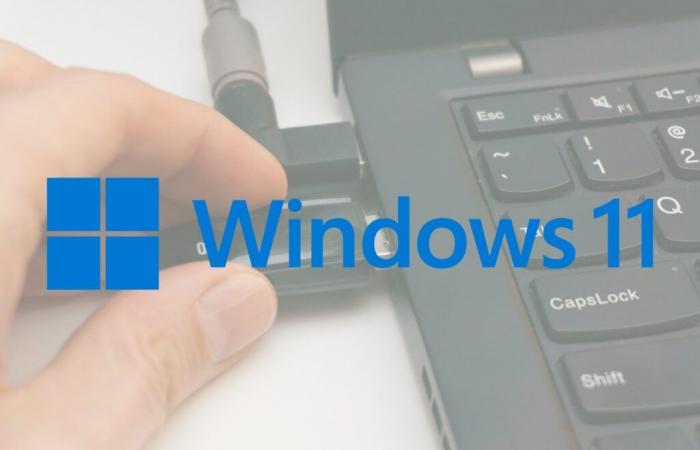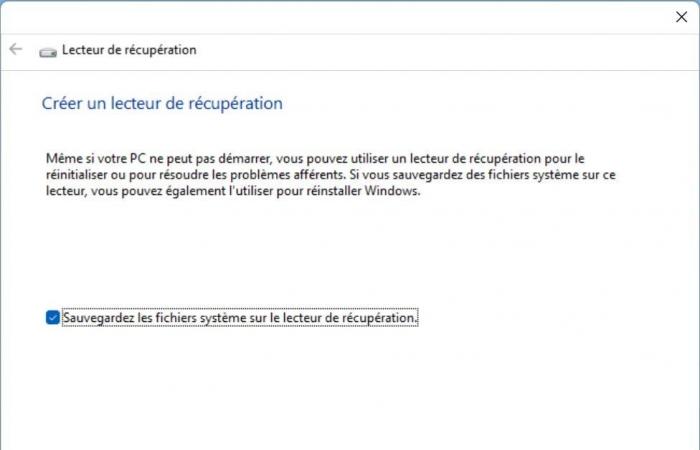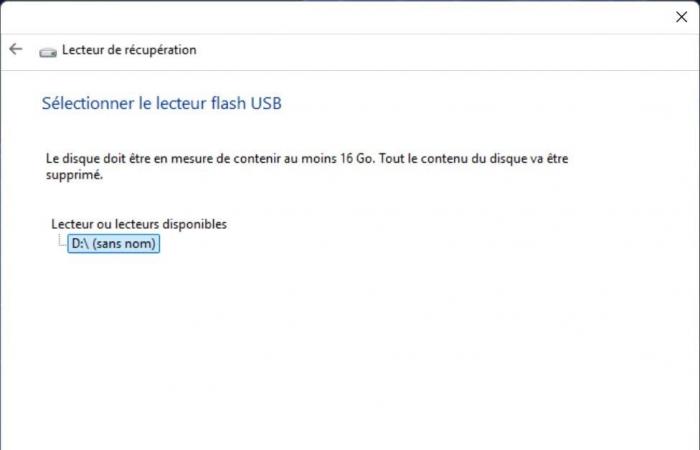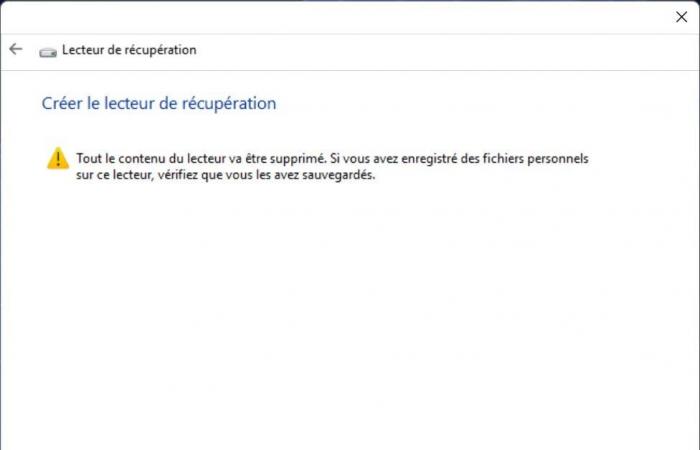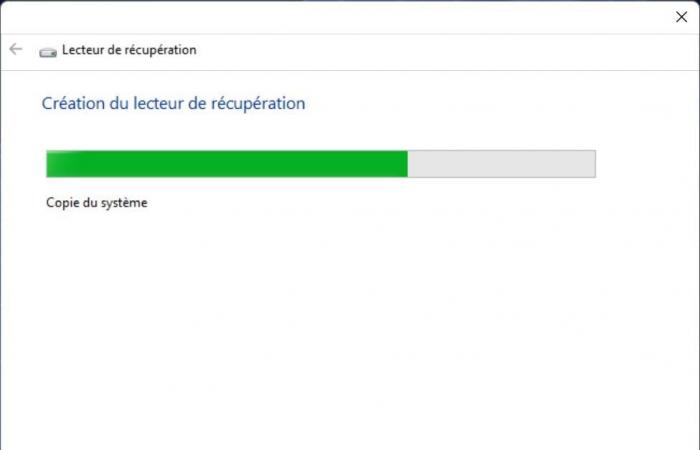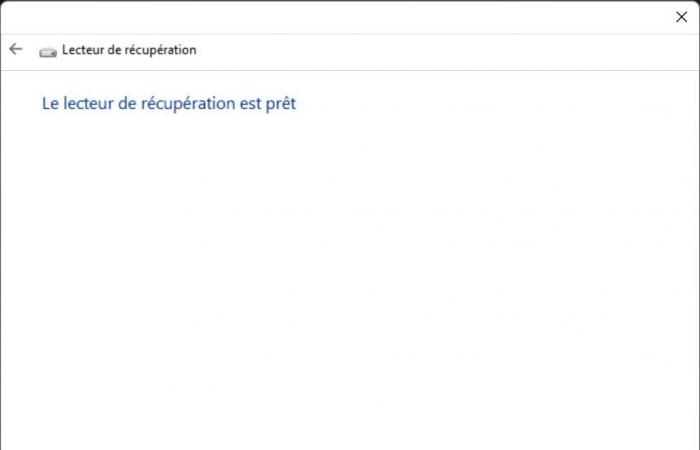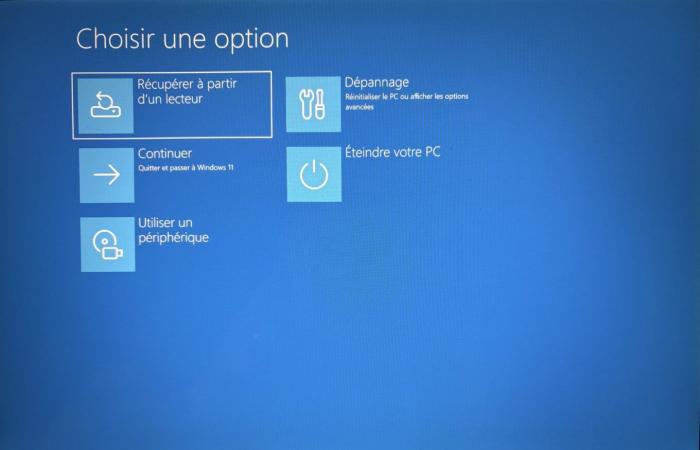Have you just installed a new application, updated a driver, or applied a Windows update and things didn’t go as expected? Most of the time, it’s when you don’t expect it that your PC crashes. Your PC starts, but Windows 11 no longer responds and you don’t know how to recover it?
To avoid this catastrophic scenario, it is better to prepare some tools in advance to keep on hand so that you can be repaired in the event of a problem. Windows includes a tool to create a recovery USB key on which you can start your PC to troubleshoot it.
Please note that if you have to reinstall Windows from this drive, all of your data stored on your PC (documents and applications) will be lost. We can’t repeat it enough, but make sure to back up your data regularly, on external storage devices, or on the Cloud. You will only need a few minutes, as well as a USB key with at least 16 GB of storage, which you will dedicate entirely to this purpose.
On its website, Microsoft recommends “recreating the recovery drive every year.” And for good reason, the recovery USB key that you will create will be based on the last major update of the operating system. Here’s everything you need to know to create a recovery USB drive to troubleshoot your PC.
1. Open the tool to Create Recovery Drive
Microsoft has integrated a dedicated tool into its operating system to allow you to Create a recovery drive. To open it, use the keyboard shortcut Windows + RThen in the Run window that appears, enter RecoveryDrive.exe and click OK to validate. Take the opportunity to connect the USB key to your PC.
2. Configure your recovery drive for Windows
The first window that opens displays a quick description of what the tool offers. By default, the option Backup system files to recovery drive is checked. Keep it like this and click on Following and wait a few seconds.
After the utility automatically detects the USB drive connected to your PC, click the button Following. The following window alerts you to the fact that all data contained on the USB key will be deleted. Click on Createand go make yourself a coffee.

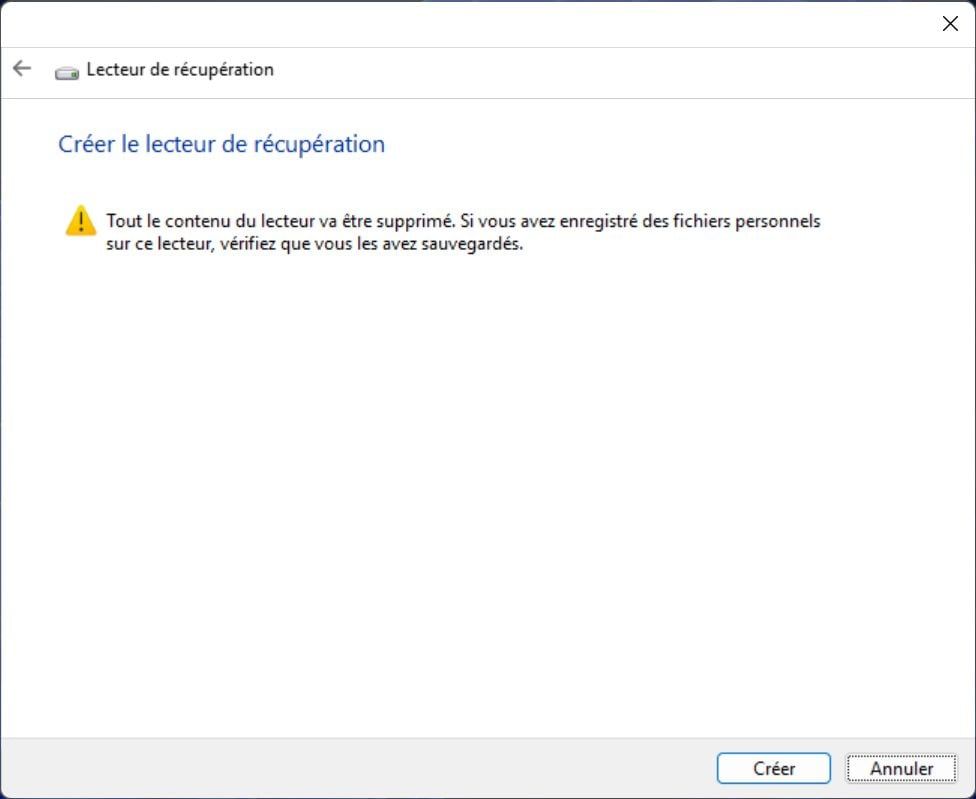
The utility will format your USB drive before copying the system and the necessary tools to transform it into a recovery device. The process is a bit long, in our case it took over an hour and a half for the USB stick to be ready.
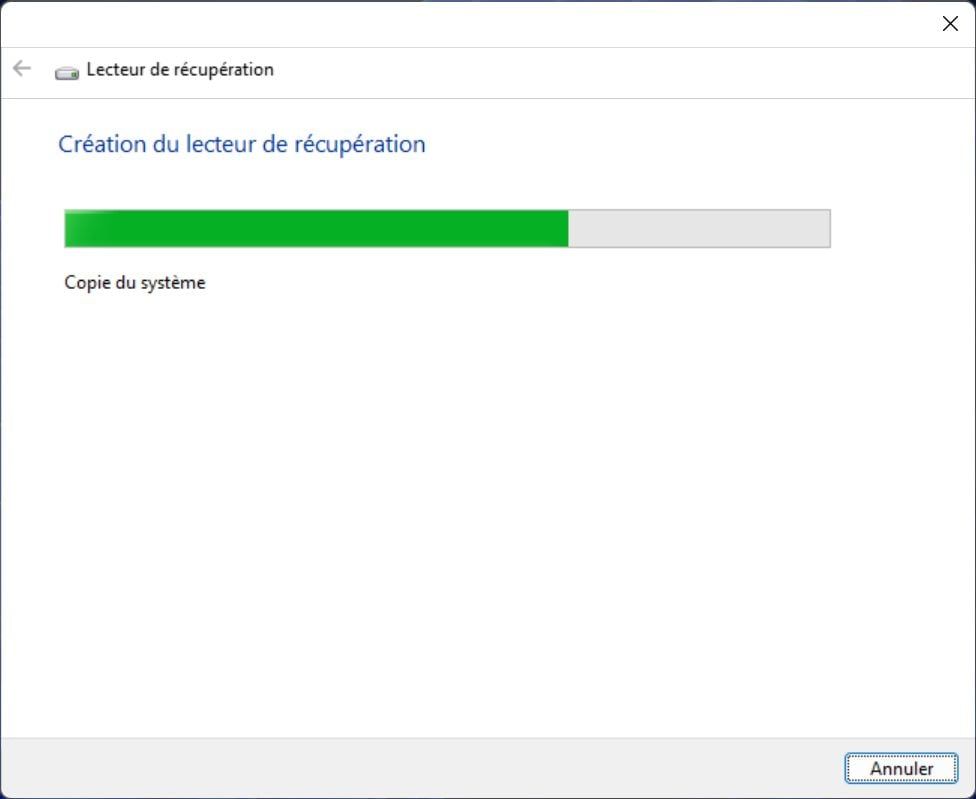
Either way, the recovery drive creation wizard will tell you that The recovery drive is ready.
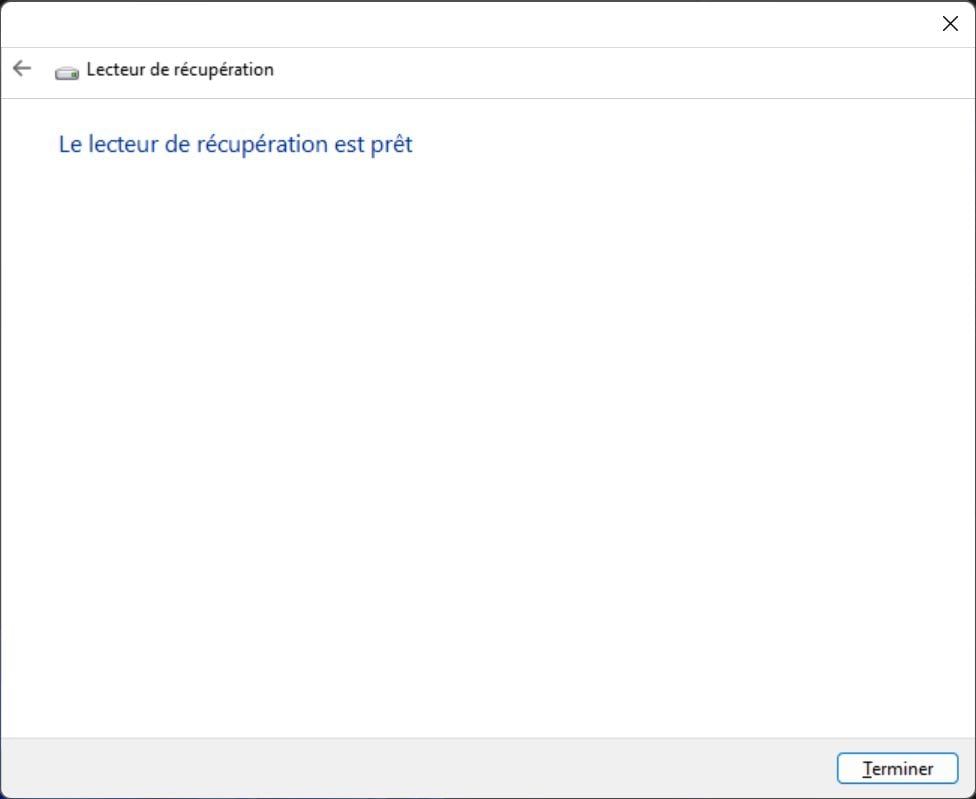
3. Boot your broken PC on the stick
When the time comes, when your PC no longer boots into Windows, you can try to troubleshoot it using your recovery USB key. You will obviously need to configure your BIOS/EFI beforehand so that the machine starts as a priority on an external device (generally by pressing the F12 key on your keyboard).
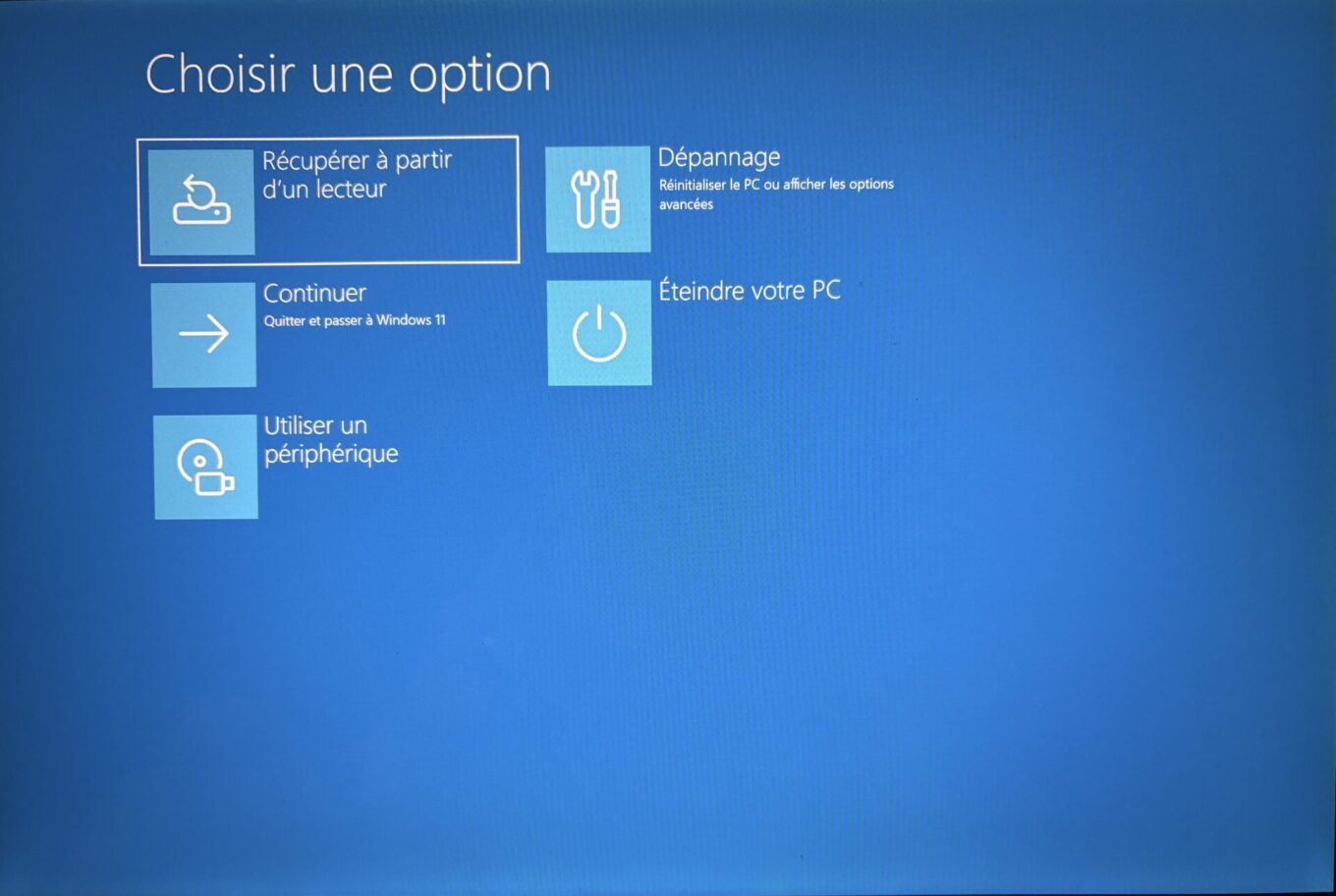
After booting your PC to the USB stick, you should be prompted to choose your keyboard layout. Once you have made your choice, several options will be offered to you. You can then choose the most appropriate one for your situation: Recover from a drive, launch Troubleshooting, etc.
???? To not miss any news from 01net, follow us on Google News and WhatsApp.

